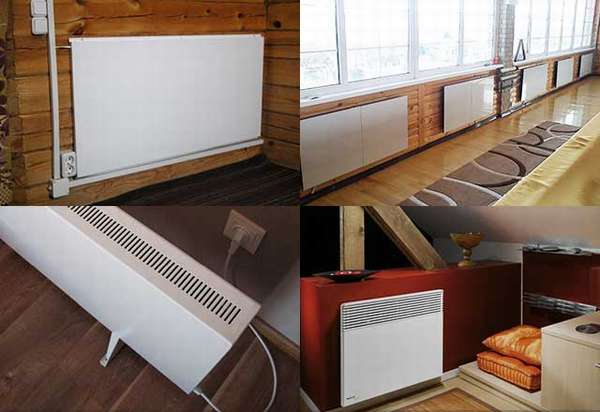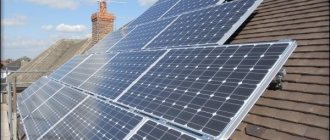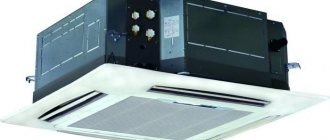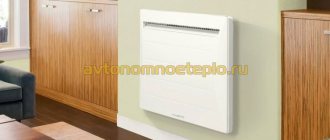One of the most costly items for maintaining a house or apartment is considered to be the cost of heating in the autumn-winter period. Every year, new heating technologies appear - from heat pumps, ultra-efficient electric boilers to double-layer film underfloor heating and more. One of the latest interesting developments in the field of heating technologies was the appearance of Revolts drywall panels, which a large number of experts call one of the most effective and safe for the home.

The device of the novelty, which is the Revolts
In appearance, Revolts panels are very similar to ordinary square plasterboard with a suspension and a smooth face. From such sheets or single heating elements of Revolts gypsum plasterboard heating, it is possible to collect a whole wall, tiled ceiling or install single heaters in the coldest rooms of the building.


According to manufacturers, the heating system is based on the well-known PLES technology - heating using thin graphite films on a polymer film.


Structurally, Revolts gypsum plasterboard panel consists of the following elements:
- Heating composite sheet based on metal-graphite film tracks;
- Gypsum matrix, inside which a heating film is laid;
- Thermal insulating substrate applied to the back side of the revolts panel;
- Electric wiring and suspension system built into the heating sandwich.
Important! Revolts heating panels do not require special conditions or fire protection elements, since in working order the temperature of the gypsum plasterboard surface rarely exceeds 90 ° C.
A fairly simple and lightweight design that has no moving parts, hydraulic and air circuits, open heating coils or other elements that consume oxygen in the air or reduce the humidity in the room.


Features of infrared plasterboard heating
The process of obtaining heating services in the cold season is increasingly becoming unprofitable. Neither the quality of the supplied heat, nor the payment for it stand up to criticism. Therefore, more and more users appear who want to acquire autonomous heating systems. One of these systems is infrared plasterboard heating.


Infrared drywall for home heating
How the Revolts heater system is installed
The most common installation option is ceiling, experts recommend installing gypsum plasterboards on the ceiling, as it is done when installing a conventional ceiling cladding.


The main requirement for installing Revolts heating panels is the insulation of the concrete ceiling slab, otherwise half of the heat will go into the concrete. In this case, it is not necessary to sew on foam plates, it is enough to nail a layer of OSB plates on the dowels, after which you can put the profile and fix the Revolts heaters with self-tapping screws, like ordinary drywall.


The second option involves the installation of heating panels on the walls of rooms, most often the heaters are mounted at a height of 20-30 cm above the floor level, like conventional convectors or radiators.


In this case, there is no loss of usable space due to the suspension of radiators of heat convectors, you can get rid of pipes, and you do not need to punch channels for laying separate wiring, as when using any electric heaters.At the same time, there is no need to lay out the entire ceiling or walls with Revolts panels, one square of the useful area of the room will require 0.7 square of the heating surface, or vice versa, 1 m2 of drywall is able to heat 1.3 m2 of the room.


The panels can also be laid in the base of the floor covering in the image and likeness of a warm floor. In this case, the heat transfer coefficient decreases due to an additional layer of laminate or parquet flooring, but in general, the quality of heating increases due to a more rational distribution of heat.
Power calculation
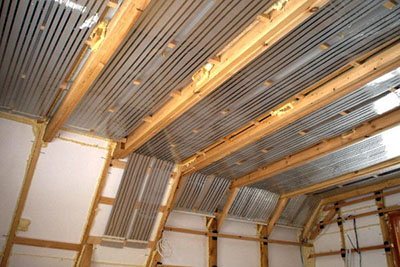

To buy a device of optimal power, the thermal regime of the apartment is calculated. For this, the following formula is used: CT = (OD x RT x PC) / 860. Explanation of the formula:
- CT scan - The amount of heat.
- OP is the volume of the room. If there are several rooms, then the volume of each is first calculated separately, and then the results are summed up.
- RT - temperature difference. Let's say outdoors -5 ° C, but I want to get indoors +15 ° C - to find RT, you need subtract –5 ° C from +15 ° C. We get: 15 – (–5) = 20.
- PC - correction factor, the size of which varies depending on the type of walls. If the walls are wooden, then he will be equal to 4if standard brickwork is used in one layer - 3, in two layers - 2, concrete heat-saving slabs - 1, improved heat-saving systems - 0,5.
- 860 - special correction factor, by which the result is divided in order to convert units to kilowatts.
Attention! This formula is approximate. For a more accurate calculation, it is recommended to seek help to a qualified specialist.
What's special about the new heating scheme
The sale of a new heating system is accompanied by a very powerful advertisement. Manufacturers and dealers offering to replace traditional water and electric heaters with Revolts plasterboard heating panels give the following arguments in favor of the new product:
- A fairly simple installation of Revolts heating panels, most of the work can be done by hand, without the help of narrow-profile specialists;
- The Revolts system can be installed even in damp rooms, since the heating metal-carbon film is covered with a layer of polymer and gypsum;
- Economy heating revolts is twice as efficient as conventional heaters, convectors, radiators, the average power consumption of one panel is 100-300 W / h;
- Thanks to the design features, it is possible to individually regulate the heating and heat transfer of any sections of the walls in the room, thereby creating the opportunity to save on night mode and in the absence of the owners in the house;
- Revolts panels have an almost unlimited service life.
It is clear that no technical system has an unlimited resource, but the manufacturer's specialists believe that a drywall sandwich can withstand a very large number of heating and cooling cycles.


In addition, most of the selling companies believe that Revolts gypsum board heating panels can be used as a finishing material, just like regular drywall. After installation, the surface of Revolts panels can be painted, applied with decorative plaster or tiled like a regular wall. Since heating with the help of the new system is used for a rather limited period, it is quite difficult to reliably confirm or deny the resource of heaters, but preliminary conclusions about the advantages and disadvantages can be drawn from reviews of Revolts gypsum plasterboard heating panels over the past couple of years of operation.


What is Electric Infrared Heating with Energy Saving Technology?


An infrared heater is a heating device that transfers heat to the surrounding space through IR radiation.
The main structural element of an IR heater is infrared heater (Heating element or open spiral). The use of energy-saving infrared devices saves money, since conventional electric emitters consume heat to heat not only bodies, but also air.
The heater is connected to the mains, when an electric current passes through the heating element, infrared rays are emitted. When infrared rays pass through objects, energy is converted into heat, which is then released into the surrounding space. Often installed on devices reflectors for directional heating.
Attention! If the infrared device is installed in violation of the operating rules, then it can harm your health.
Advantages and disadvantages


- Not all devices will fit into the interior of the room. For example, ceiling-type appliances are poorly combined with a classic interior, but well with minimalism and high-tech style.
- Installing some heaters (for example, drywall with an infrared heater) requires preliminary repairs.
- Overheating of the room may occur in case of incorrect calculation of heat transfer. To avoid this, it is recommended to buy not one powerful heater, but several small ones, then in case of overheating it will be possible to turn off one of them.
Consumption of consumed electricity


Infrared heaters widely used in everyday life. They are installed in houses and apartments, on the territory of warehouses, in workshops, in stadiums, in theaters and concert halls, in offices and so on.
The quality of work of heating panels Revolts
New heating technology is just picking up steam, and criticism is already snowballing. Undoubtedly, the idea behind using gypsum plasterboard as a heating surface has its own advantages:
- The heater works like a wall of a wood-burning stove, part of the heat goes away due to convection, part due to radiation, drywall does not burn, is not able to burn or cause a short circuit;
- A plasterboard panel with a heating film interlayer retains most of the sheet's characteristics - a flat surface, low weight and ease of installation;
- The absence of metal in the construction of the heater.


In reality, if you disassemble the Revolts panel, you can see that there is a transparent polymer film inside between two layers of gypsum, which is why the surface temperature never exceeds 80-90 ° C. Manufacturers of Revolts gypsum plasterboard heater attribute this fact to the advantages of heating, since the material does not shield walls and does not create a background, as is the case with electric spiral heaters.
How are CHP heating panels arranged
Outwardly, these panels look like the simplest thin sheet of drywall 60 × 60 cm in size.But this simplicity is only external. Inside the gypsum sheet, there is a film made of a special polymer consisting of a carbon composite.


From the rear, the panel is protected by a heat-insulating layer, and is also equipped with a cord for connecting to the power supply
These panels can be safely used for wall and ceiling cladding, they can be combined into one common system. The plates are heated from the inside and emit infrared waves, while consuming 100 Wh to heat 1.5 m² of area. It is difficult to call this technology energy-saving in the literal sense. The carbon polymer film inside HPC batteries does not melt, oxidize or burn. The room temperature can be controlled with a simple device that is mounted separately from the panels on the wall.


The control unit can turn the panels on and off at the time you need
Is it worth contacting Revolts heaters, user opinion
The disadvantages, according to reviews, of Revolts plasterboard heating are no less than advantages, so it is important to remember them as well.
As the most significant problems:
- Product price;
- The complexity of the repair;
- Heating too low.
The first and most important complaint about the work of drywall heaters is the high price, a square meter of Revolts will cost 1300-1400 rubles, respectively, to heat one room with an area of 20 m2, at least 14 squares of Revolts will be required, which will amount to almost 19 thousand rubles. This is about twice as expensive as if you equip a room with a pair of conventional 1 kW convectors.


At the same time, gypsum plasterboards require careful handling and careful installation, if you drop the heater from the ceiling height, then with a high degree of probability it will have to be scrapped, since it is almost impossible to repair the monolith.
In addition, according to reviews, heating Revolts requires a very competent planning. This is the second problem, and perhaps the most difficult one faced by consumers. Revolts heating systems are classified as low temperature systems. This means that 50-55% of the heat is removed from the gypsum surface by convection, and the device itself is more similar to a conventional hot-water radiator or an oil convector.


Therefore, despite the presence of a heat-insulating lining, it is still better to install the Revolts panel at a short distance from the walls, and not mount it as a cladding. All stories about the ideal thermal insulation of the back surface are nothing more than advertising, consumers themselves have already realized this, and often the Revolts heating drywall is mounted by hand in the same way as a conventional electric convector.


The second half of the energy is transmitted in the form of radiation, but very soft and weak, so plates can be used to sheathe the space around a child's bed or sofa, and not warm the entire space. The maximum heating range of the Revolts panel is 0.6-0.8 m, which is clearly not enough.
What is the principle of a drywall device
The operation of gypsum plasterboards is based on the principle of the effect of infrared radiation on the surrounding objects. This radiation is the brother of the sun's rays.


Infrared waves do not heat the air, but objects that are in its path
And already from the objects, in fact, the atmosphere heats up. As a result, we get safe heat and batteries that cannot be burned on. At the same time, the air in the room does not dry out, which is very important.
What is the real situation with Revolts panels
One of the remaining uncertain issues is the reliability and service life of Revolts. Plasterboard manufacturers claim that the heating element is made from a highly resistant and durable composite material. The film is not afraid of acids and alkalis, does not oxidize or burn out. Practical tests show the ability of the heating core of a drywall panel to work continuously for 10-11 years, in theory Revolts should work almost forever.


In practice, heating gypsum boards are in more difficult conditions. First, the heating-cooling cycle invariably leads to the development of a large number of microcracks, both in the gypsum itself and in the film material. Even metal has the ability to get tired, especially since the Revolts film heater will crack quickly enough if the installation recommendations are not followed.
Secondly, despite the assurances of the manufacturer, Revolts drywall panels should not be covered with any decorative materials - paint, apply plaster, and even more tiled.This always leads to the "conservation" of heat and destruction of gypsum, as a building material, under the influence of water vapor. A tile-covered plasterboard heating panel will transfer heat to concrete and plaster.
In addition, panels cannot be cut at their own discretion, as it could be done with plasterboard sheets, so the number of heaters must be carefully weighed against the size and geometry of the room.
Basics of installing plasterboard heaters
To simplify installation, manufacturers apply special markings to the panels of plasterboard heaters. It shows the attachment points. The rest of the process is the same as with ordinary CHP sheets. Installation can be open or hidden.
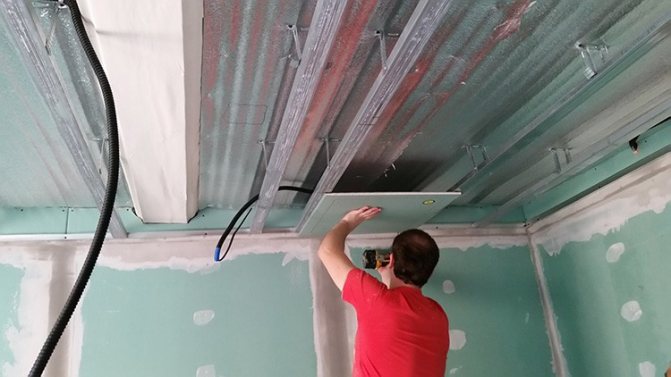

With the open version, the connection cords are tucked into the cable channel, with the hidden version, they are hidden behind the crate
For additional thermal insulation on the reverse side of the panel, place "Isover" or other similar insulating material.
Tips for prospective drywall buyers
Practice shows that the most suitable place for installing Revolts gypsum plasterboard heaters is the ceiling and the midline of the walls. In rooms where most of the time is spent in a sitting position, Revolts heating panels are installed on the walls of the room so that the distance from the sofa, armchairs or bed does not exceed 80 cm.


In the kitchen, in the corridor, even in the bathroom, plasterboard heaters are installed on the ceiling. If the room is large or very high ceilings, then there will be little use from drywall panels; at best, you can make a comfort zone on a small patch near the computer, at the table or near the TV. In such a situation, Revolts panels are significantly inferior to underfloor heating, both in terms of efficiency and heating economy.
The maximum efficiency of Revolts gypsum plasterboard heaters is achieved in rooms with a maximum width of 2.5 m. For narrower rooms, most of the heat will simply go to the ceiling and be lost; for wider spaces, the effectiveness of Revolts gypsum panels will clearly not be enough, in the center a zone with a low air temperature will necessarily form.
Types and types of modular infrared heating
There are a large number of different infrared heating devices on the market. They have the same principle of operation, but design may vary. Design differences help to solve a particular engineering problem in an optimal way.
Spot IR Heaters


In appearance they resemble ordinary lamps.
They are fixed to the wall with a bracket or placed on the floor.
Very often used as element of the interior.
To heat large rooms, it is recommended to buy several small, medium-power spot heaters, installing them in different corners of the room.
Reference! The main disadvantage is relatively high price devices of this type, but in the case of long-term use, these costs pay off.
Film Plan
They represent a wide film, into which thin infrared heating elements are woven. The film is mounted under the floor, on the walls and on the ceiling. The film does not affect the operation of equipment, and the room heats up evenly.
In addition, the Plan IR film is often cut into small rugs for local heating, which are placed in the bathroom, at the entrance, and so on. Infrared film completely safe, in terms of fire hazard, so it can be installed under a wooden floor.


Photo 1. Infrared film with interwoven heating elements, mounted under the floor in the bathroom, hallway.
Heating plasterboard
Has the appearance of drywall, on the back of which are placed electrically conductive carbon filamentsthat emit powerful infrared radiation when current is passed.The threads are insulated with special polymer films and reflectors for optimal radiation. Plasterboard heating panels are used in the same way as conventional drywall (for example, to create wall cladding).
Ceiling panels
They are flat panels of small thickness, which are placed in a metal case, and they are mounted on the ceiling. The ceiling panels are pretty hard to damage (however, in the case of water leaks in a room on the floor above, it is recommended to turn off the device).
Ceiling-mounted infrared panels are considered the best method for heating rooms because they do not take up useful space (whereas, for example, infrared lamps need to find a place to install them). Ceiling radiators are used in the office, home, warehouse and so on.


Photo 2. Infrared ceiling heaters, flat, in a metal case, do not take up space in the room.
Wall-mounted infrared panels are similar in technical and operational characteristics to ceiling or floor-mounted ones. However, wall-mounted appliances are on average weaker than others, as the heated air always tends to rise, which generally reduces the efficiency of the heater.
You can always increase the power, but this will lead additional electricity costs... Therefore, it is recommended to install wall panels as an additional heat source for heating cold areas.
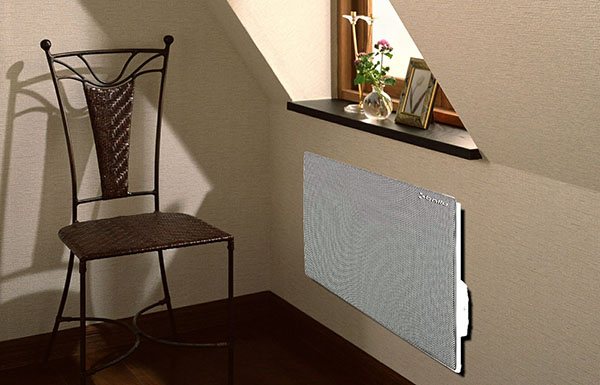

Photo 3. Wall mounted UV panels, mounted in the room under the window, are suitable as an additional source of heat.
Gas radiators
Gas heaters emit infrared rays that occur as a result of combustion of an air-gas mixtureinside the device. Devices of this type are very powerful, and in some cases, due to their high power it is contraindicated to use for home heating.
Engineers recommend installing devices of this type for heating large premises (factory premises, indoor sports grounds, retail premises, etc.).


Photo 4. Gas infrared panels in a large room are very powerful, therefore they are not used in the house.
Water-cooled ceiling-mounted UV emitters
Are complex closed devices, in which infrared rays heat water, which is then fed into the pipes as a heat carrier. Such systems are used in industry, and installation in private houses unjustified for economic reasons (since it is faster and cheaper to supply a simpler device).
IR system for underfloor heating
They are modular plates or a film that is placed under a wooden parquet. The heated coating is non-flammable and completely safe from a fire point of view. Recommended to use as auxiliary power supply. For example, you can install floor plates and an IR lamp - in this case, the plates will heat the floor, and the lamp will heat the walls and objects in the room.
The device and principle of operation of thermal panels
The infrared thermal panel is so simple that one can only wonder why the proliferation of these inexpensive, but such efficient devices is only happening now.


Infrared panel device
The design of the IR device consists of a dielectric base, on top of which a thread of carbon black is laid. Due to the high resistance of the latter, the electric current passing through the carbon fiber contributes to its heating. The heater is covered with a special decorative coating, which acts as an emitter of infrared waves. The panel design provides for temperature control with built-in or remote sensors.
The operating principle of thermal panels is borrowed from the Sun.Like our luminary, they carry out heat transfer not by convection, but by radiation, heating the surfaces of objects directly. At the same time, thermal energy passes through the air practically without losses (if you do not take into account the dissipation). The emissivity of infrared heaters is most effective in the microwave range, at wavelengths from 3 microns. Such rays are able to penetrate human skin, heating tissues and blood vessels, which contributes to the rapid spread of heat throughout the body.
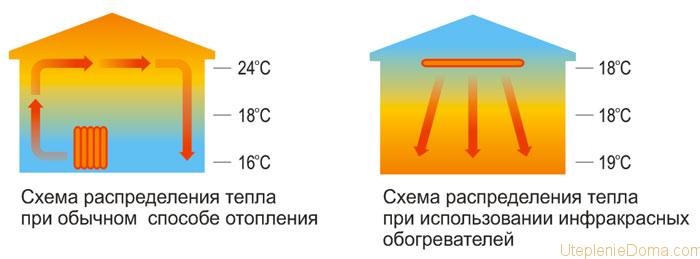

Private house infrared radiator
Today infrared heating of a private house has become an alternative to traditional convection heaters. Models resembling conventional heating radiators are equipped with mode control, which makes it possible to heat the area of the room as needed. There are no restrictions on the use of infrared emitters. A high-quality device can work for many years without repair, there is no need to build boiler houses, and the cost of paying for electricity is reduced significantly.
Batteries with infrared radiation do not need to be configured, the system starts working immediately after plugging into the network. Installation of panels and films is quite simple, maintenance requires minimal knowledge and skills, and yet, before starting installation, you must read the instructions.
Modern infrared heating technology fits into any interior. When placing the device in easily accessible places for people and animals, the emitter is covered with a metal mesh or a transparent partition. The heater combines well with traditional types of heating, is mounted at a height of 2.5 - 3 meters from the floor, and has a high performance.
